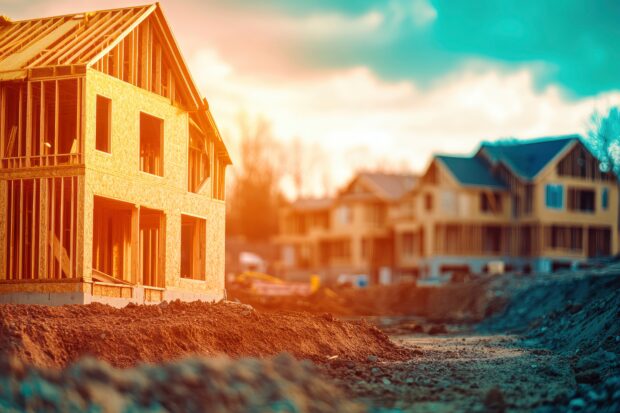Construction defect litigation has become a significant factor in Hawaii’s already constrained housing market, contributing to rising costs, financing challenges and shifts in development patterns that may reduce home ownership opportunities, according to a new report by the University of Hawaii Economic Research Organization (UHERO).
The study, prepared for the Hawaii Homeownership Center, examined how the rising volume and scope of lawsuits contributes to financial uncertainty, increasing costs for developers, insurers and home buyers.
Construction defect cases now affect nearly 1,000 units per year on average, representing a significant share of the 5,000 homes built each year in Hawaii.
The lawsuits have resulted in settlements reaching tens to hundreds of millions of dollars, with 30–40 percent going toward legal costs and taxes.
Rising litigation risks and construction costs have driven up insurance costs for developer, by as much as 500 percent for builder’s insurance premiums and increased financing expenses for homebuyers.
“Housing affordability in Hawaii is already a serious challenge,” said Trey Gordner, lead author and policy researcher at UHERO. “As lawsuits become more frequent and larger in scale, they add financial uncertainty for developers, insurers, and home buyers alike.”
One major impact of construction defect litigation is its restriction on home buyer financing.
Units involved in litigation are often excluded from government-backed mortgage programs such as FHA and VA loans, making financing more expensive and difficult to secure, the report noted.
First-time buyers and lower-income households, who often rely on these types of programs, face particular difficulties.
To account for risk, lenders often add 0.25–0.5 percent to mortgage rates on homes under litigation.
At current interest rates, this translates to $100 per month for every 0.25 percent rate hike, or an additional $36,000 over a 30-year loan on a $1 million home, analysis showed.
The report also finds that developers, facing heightened litigation risks and insurance costs, may be shifting away from for-sale condominiums, which have historically served as an important entry point for home ownership, toward rental housing, limiting the supply of new owner-occupied homes.
At the same time, the study acknowledges that construction defect litigation serves an essential function in addressing serious deficiencies that affect homeowner safety and building integrity.
The report does not evaluate the legal merits of individual cases but notes that changes to the state’s Contractor Repair Act and other legal processes could help balance homeowner protections with a more predictable legal environment for builders.
It highlights recent policy reforms in other states, including alternative dispute resolution mechanisms, adjustments to liability frameworks and streamlined settlement processes designed to prioritize timely repairs over lengthy legal battles.
The full report, “Construction Defect Litigation, Housing Affordability, and Homeownership in Hawaii,” is available on the UHERO website.





















 AI in Property/Casualty Insurance: Why Trusted Data Is the Missing Link
AI in Property/Casualty Insurance: Why Trusted Data Is the Missing Link  Chubb, The Hartford, Liberty and Travelers Team Up on Surety Tech Co. Launch
Chubb, The Hartford, Liberty and Travelers Team Up on Surety Tech Co. Launch  A Practical Blueprint: The Five Plays of an Innovation Culture
A Practical Blueprint: The Five Plays of an Innovation Culture  The Hardest Part of Innovation in Insurance Isn’t Technology; It’s Culture
The Hardest Part of Innovation in Insurance Isn’t Technology; It’s Culture 



